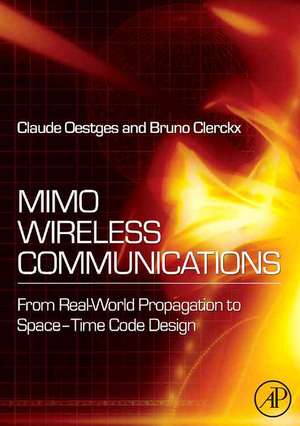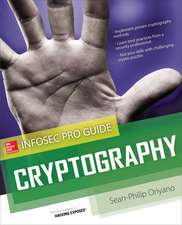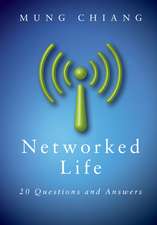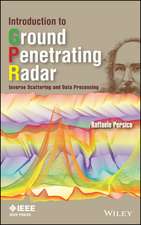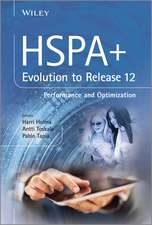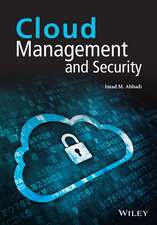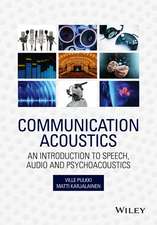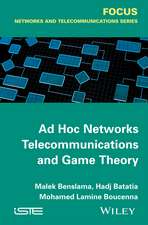MIMO Wireless Communications: From Real-World Propagation to Space-Time Code Design
Autor Claude Oestges, Bruno Clerckxen Limba Engleză Hardback – 29 mar 2007
The various chapters of this book provide an essential, complete and refreshing insight into the performance behaviour of space-time codes in realistic scenarios and constitute an ideal source of the latest developments in MIMO propagation and space-time coding for researchers, R&D engineers and graduate students.
Features include
• Physical models and analytical representations of MIMO propagation channels, highlighting the strengths and weaknesses of various models
• Overview of space-time coding techniques, covering both classical and more recent schemes under information theory and error probability perspectives
• In-depth presentation of how real-world propagation affects the capacity and the error performance of MIMO transmission schemes
• Innovative and practical designs of robust space-time coding, precoding and antenna selection techniques for realistic propagation (including single-carrier and MIMO-OFDM transmissions)
"This book offers important insights into how space-time coding can be tailored for real-world MIMO channels. The discussion of MIMO propagation models is also intuitive and well-developed."
Arogyaswami J. Paulraj, Professor, Stanford University, CA
"Finally a book devoted to MIMO from a new perspective that bridges the boundaries between propagation, channel modeling, signal processing and space-time coding. It is of high reference value, combining intuitive and conceptual explanations with detailed, stringent derivations of basic facts of MIMO."
Ernst Bonek, Emeritus Professor, Technische Universität Wien, Austria
* Presents space-time coding techniques for real-world MIMO channels* Contains new design methodologies and criteria that guarantee the robustness of space-time coding in real life wireless communications applications* Evaluates the performance of space-time coding in real world conditions
Preț: 505.54 lei
Preț vechi: 656.54 lei
-23% Nou
Puncte Express: 758
Preț estimativ în valută:
96.75€ • 100.63$ • 79.87£
96.75€ • 100.63$ • 79.87£
Carte tipărită la comandă
Preluare comenzi: 021 569.72.76
Specificații
ISBN-13: 9780123725356
ISBN-10: 0123725356
Pagini: 480
Ilustrații: Approx. 100 illustrations
Dimensiuni: 172 x 244 mm
Editura: ELSEVIER SCIENCE
ISBN-10: 0123725356
Pagini: 480
Ilustrații: Approx. 100 illustrations
Dimensiuni: 172 x 244 mm
Editura: ELSEVIER SCIENCE
Public țintă
R&D communications engineers working in mobile and wireless communications, academic researchers, post graduate students.Cuprins
1. Introduction to multi-antenna communications; 2. Physical MIMO channel modelling; 3. Analytical MIMO channel representations for system design; 4. Mutual information and capacity of real-world random MIMO channels; 5. Space-time coding over I.I.D. Rayleigh flat fading channels; 6. Error probability in real-world MIMO channels; 7.Space-time coding over real-world MIMo channles with no transmit channel knowledge; 8. Space-time coding with partial transmit channel knowledge; 9.Space-time coding for frequency selective channels; Appendices.
Recenzii
“This book offers important insights into how space-time coding can be tailored for real-world MIMO channels. The discussion of MIMO propagation models is also intuitive and well developed. --Professor Arogyaswami J. Paulraj, Stanford University, CA
“Finally a book devoted to MIMO from a new perspective that bridges the boundaries between propagation, channel modeling, signal processing and space-time coding. It is of high reference value, combining intuitive and conceptual explanations with detailed, stringent derivations of basic facts of MIMO. --Ernst Bonek, Emeritus Professor, Technische Universität Wien, Austria
“Finally a book devoted to MIMO from a new perspective that bridges the boundaries between propagation, channel modeling, signal processing and space-time coding. It is of high reference value, combining intuitive and conceptual explanations with detailed, stringent derivations of basic facts of MIMO. --Ernst Bonek, Emeritus Professor, Technische Universität Wien, Austria
